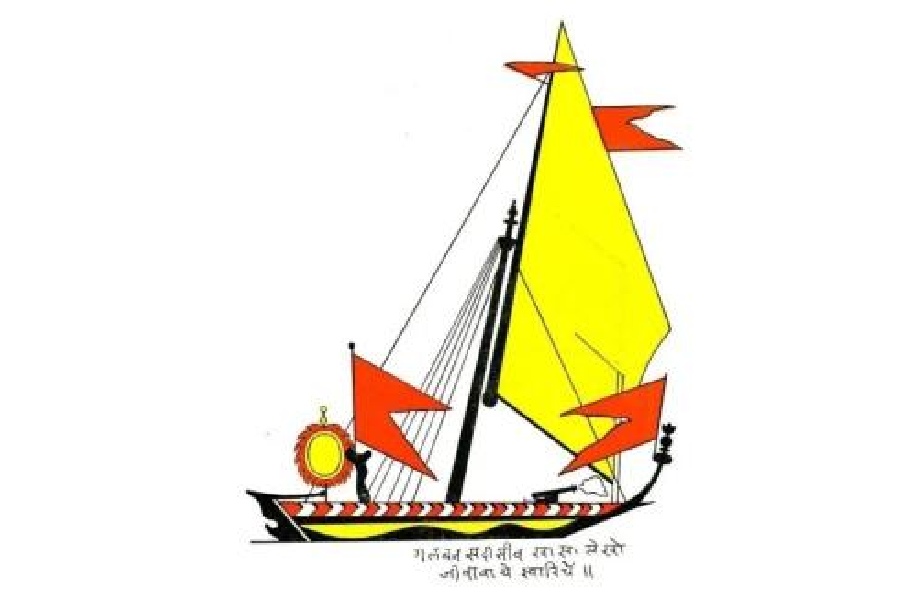Book: Empires Of The Sea: A Human History of the Indian Ocean World
Author: Radhika Seshan
Published by: Macmillan
Price: Rs 550
Empires of the Sea is part-primer, part-synoptic overview, which summarises for the lay reader different academic trends and discussions. It is, in addition, a reflective work on how we should see India and its history in the context of the Indian Ocean. This means moving away from land-based and continental perspectives and understanding that too strong a focus on the North, North-West and the North-East obscures the extent of India’s maritime and coastal traditions and the depth of our relationship with the Indian Ocean.
The Portuguese and the Mughals arrived in India within a quarter century of each other, following, of course, different trajectories and routes. It is a fair comment that a holistic view of India and its history must have both the continental and the maritime dimensions in equal measure.
Yet overcoming what is called ‘sea blindness’ is not easy after being bought up on this staple idea. In an early attempt to shake educated Indians out of their continental fixation, the historian, K.M. Panikkar, had described in 1945 two naval battles fought by the Portuguese on the west coast of India — in 1503 in Cochin and in 1509 in Diu — as being fundamentally more important than Plassey or Buxar for the future history of India. This was so because they laid the firm foundations of European mastery on the Indian Ocean for the next four centuries.
A maritime perspective would necessarily mean studying the peninsula, its coasts, and the Arabian Sea and the Bay of Bengal, each of these was a subset of the much wider and integrated universe of the Indian Ocean notwithstanding a humungous diversity in history, geography and polities. From Harappa until the consolidation of European dominance of these waters and even after that, this was a vast maritime network of trade and commerce through which goods, people and ideas moved virtually seamlessly. Such movement happened through the accumulation of knowledge about sea currents, winds, seasons and ship-building technologies over centuries.
Understanding all this in their granular detail can, however, require concerted acts of historical recovery. The author explains: “Colonization not only changed the countries of this world but also the knowledge structures that circulated within it.” The seas were thus gradually ignored and their intimate connection with the landmass forgotten. Knowledge of the rhythms of the monsoon winds, of currents and wind movements in different seasons, had been accumulated over generations, but often never recorded. As the practitioners of these skills disappeared and the skills and the professions fell into disuse, the knowledge base itself was fragmented and got lost. In sum, the loss of the sense of being a maritime country was as much a function of the loss of knowledge as it was of the loss of naval and political power.
Prioritising the maritime also means foregrounding a different cast of characters — sometimes less familiar to those outside the peninsula. The Chalukyas, the Cholas, the Pallavas, the Cheras, the Kakatiyas, the Kadambas, the Shilaharas, the Gangas and others jostle against one another and crowd the millennium till about 1500 CE. Some of these were coastal polities rather than purely maritime ones. Thus, on the west coast, while “the Shilaharas and Kadambas acknowledged the reality of the income from the sea, they did not concern themselves directly with those who went to sea.” The Cholas, on the other hand, at their zenith represented “a terrestrial power that looked at the maritime world as the logical extension to [their] territory.” Present at all the major coastal points of the Bay of Bengal — from present-day Sri Lanka to Odisha — the Cholas mounted expeditions against Myanmar and Kedah in Malaysia. Best known is their naval expedition against the Kingdom of Srivijaya in Indonesia. They created, in effect, “the first and last trans sea empire in Indian history.”
A further variant is found closer to the modern age, at the close of the 17th and in the early 18th centuries. The Maratha navy under Kanhoji Angre was perhaps the last concerted attempt to question English and European maritime supremacy. He used the system of passes introduced by the Portuguese to assert control over the Arabian Sea but did so “against the Europeans and along the coast rather than in the deep seas.” This was, in effect, “a variation of the European idea of sovereignty of the seas, which effectively implied that the Europeans could claim whatever sovereignty they liked in the deep sea, but once they came to coastal waters, they were subject to the control of the land or coastal polities.”
The book is packed with such detail. The more knowledgeable reader may cavil that all this is well-known but for the general reader, this is an excellent, jargon-free introduction to a field now dense with new scholarship and research.











